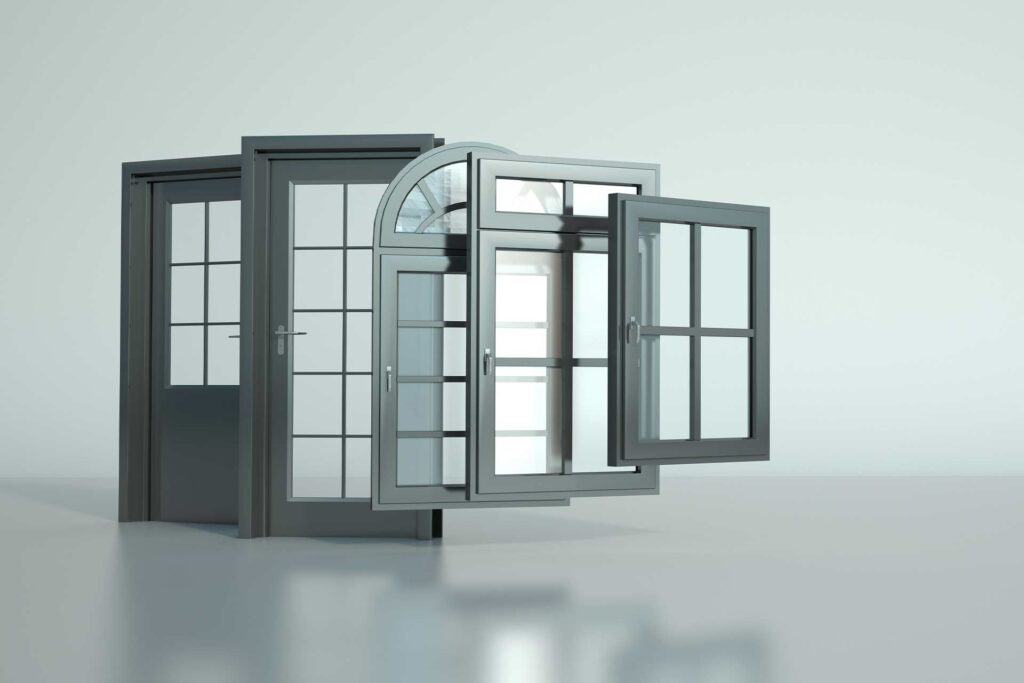Choosing the Right Frame for Your Home or Office
When it comes to windows and doors, the frame material you choose plays a critical role in durability, comfort, aesthetics, and even your electricity bills. The three most common options in the Indian market are uPVC (Unplasticized Polyvinyl Chloride), wood, and aluminium — but not all materials are created equal.
In this blog, we’ll explore why uPVC windows and doors are emerging as the smartest choice for Indian homes, especially in a weather-intense city like Chennai.
🪵 1. Durability & Weather Resistance
- uPVC: Weatherproof and corrosion-resistant. It doesn’t warp, rot, rust, or fade — even under Chennai’s hot sun, salty air, and heavy monsoons.
- Wood: Can swell, rot, or attract termites when exposed to moisture and humidity.
- Aluminium: Strong and rust-resistant, but can corrode in coastal areas if not coated properly.
Verdict: ✅ uPVC wins with long-lasting, all-weather performance.
🔇 2. Noise & Heat Insulation
- uPVC: Comes with multi-chambered profiles and works great with double or triple glazing for superior noise and thermal insulation.
- Wood: Offers natural insulation but loses efficiency over time.
- Aluminium: Poor thermal and sound insulation unless thermal-break systems are used, which increase cost.
Verdict: ✅ uPVC is energy-efficient and keeps interiors cooler and quieter.
🛠 3. Maintenance Needs
- uPVC: Wipe-clean surface, no painting, no polishing — virtually zero maintenance.
- Wood: Requires regular painting, polishing, and termite treatment.
- Aluminium: Low maintenance but may lose finish or get scratched.
Verdict: ✅ uPVC saves you time and effort.
🎨 4. Design & Customisation
- uPVC: Available in a wide variety of colours, wood finishes, and styles. You can even have different colours for the interior and exterior.
- Wood: Natural beauty but limited style flexibility.
- Aluminium: Sleek and modern, but typically comes in fewer design textures.
Verdict: ✅ uPVC gives you more control over style.
💰 5. Cost-Effectiveness
- uPVC: Offers the best value for money when you consider lifespan, insulation benefits, and low maintenance.
- Wood: Expensive upfront and even costlier over time.
- Aluminium: Mid-range pricing, but energy inefficiency may increase long-term costs.
Verdict: ✅ uPVC is the most economical long-term solution.
🌱 6. Eco-Friendliness
- uPVC: 100% recyclable, lead-free options available, and helps reduce energy consumption.
- Wood: Not sustainable unless sourced responsibly.
- Aluminium: Recyclable but energy-intensive to produce.
Verdict: ✅ uPVC is environmentally responsible.
📊 Quick Comparison Table
| Feature | uPVC | Wood | Aluminium |
|---|---|---|---|
| Weatherproof | ✅ Yes | ❌ No | ✅ Yes |
| Termite Proof | ✅ Yes | ❌ No | ✅ Yes |
| Maintenance | ✅ Low | ❌ High | ✅ Low |
| Thermal Insulation | ✅ Excellent | 👍 Good | ❌ Poor |
| Sound Insulation | ✅ Excellent | 👍 Moderate | ❌ Poor |
| Design Variety | ✅ Wide Range | 👍 Limited | 👍 Moderate |
| Eco-Friendly | ✅ Recyclable | ❌ Depends | ✅ Recyclable |
| Long-Term Cost | ✅ Low | ❌ High | 👍 Medium |
🏆 Final Verdict
uPVC windows and doors offer the best overall performance for Indian homes — especially in cities like Chennai, where weather extremes can severely impact traditional materials. They’re cost-effective, energy-saving, low-maintenance, and customizable to suit any home or commercial space.

